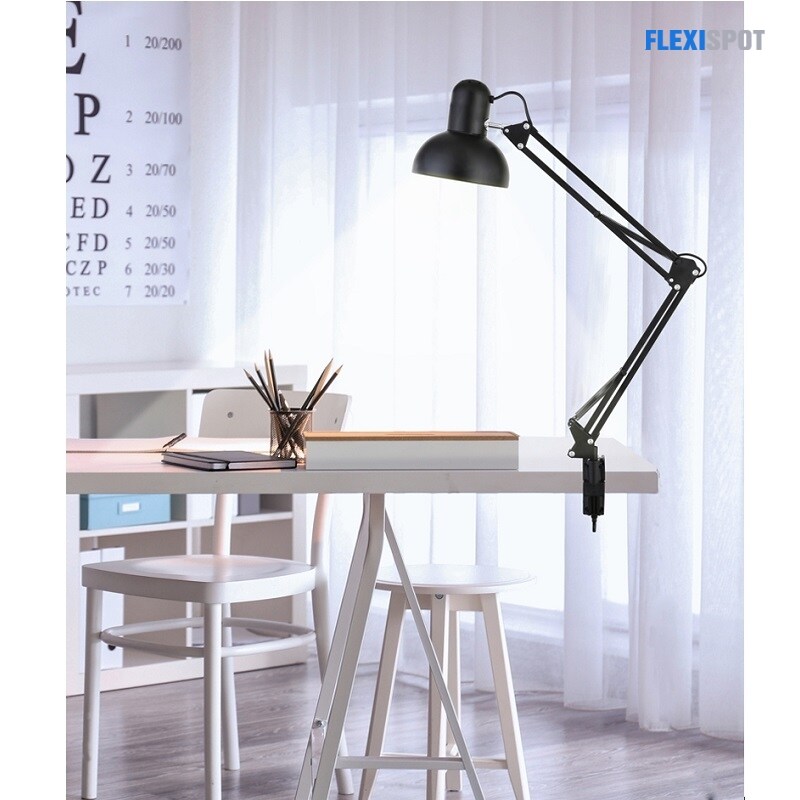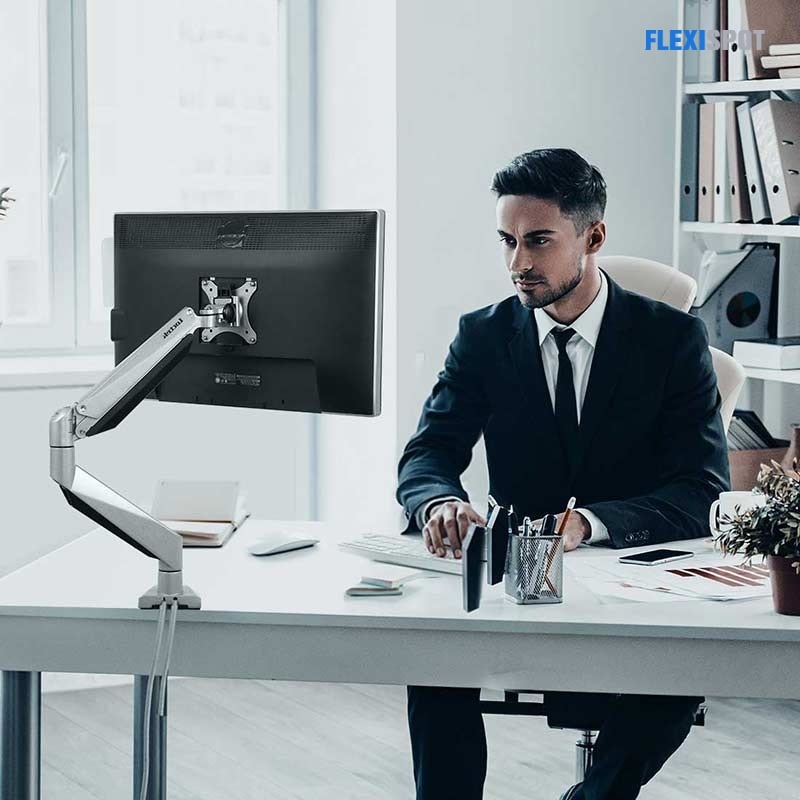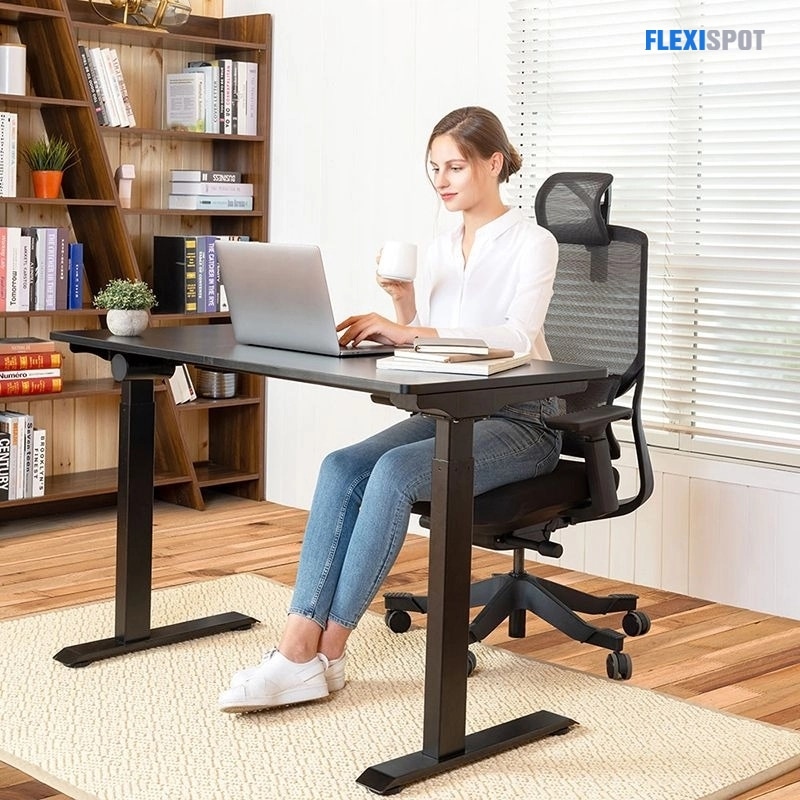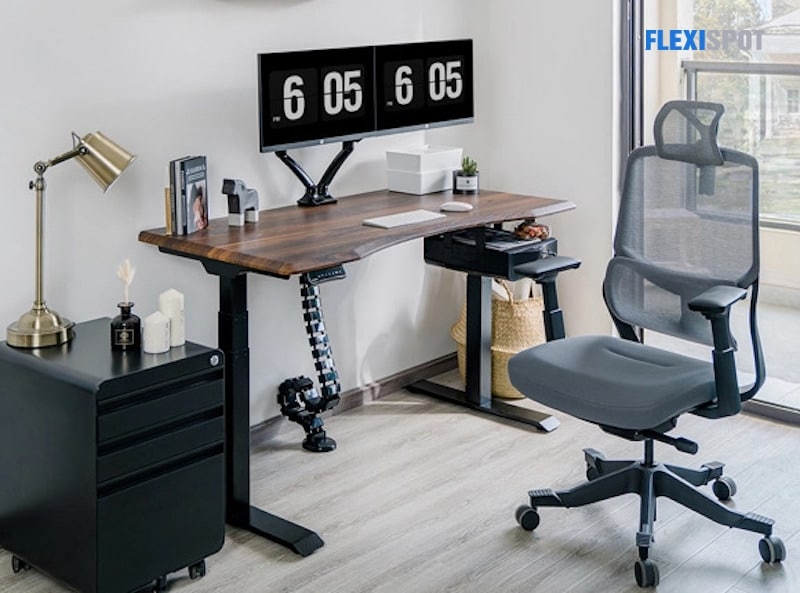Everyone is continually looking for ways to work more effectively, especially when working at home or remotely in other locations rather than a workplace has become the norm. While some people continue to work in corporate headquarters, many others have moved to create their own workspaces at home or anywhere they like.
Many people appreciate the fact that they will have to work remotely indefinitely. Some people, however, are still finding it challenging to work efficiently due to unexpected interruptions, insufficient space, or inadequate working gear.
Improving your surroundings is an excellent way to increase your productivity. To increase efficiency, your workspace must be comfy, tidy, and engaging. But don't fret; you shouldn't have to hire an interior decorator to get that perfect workspace.
When employees are in distress, they concentrate on the source of their discomfort rather than their task. The more pain they are in, the lower their production is. It costs you money in terms of performance and has additional consequences for your profit margins. If your organization ignores ergonomics, it will have to pay for expensive operations to rectify years of harmful conduct. There's no getting around it: proper ergonomics are essential for productivity.
Importance of Applying Ergonomics for Efficiency
Averts Injury from Repetitive Tasks
When your employees repeat the same movements frequently, it develops muscular fatigue, which increases the chance of injury over time. Observe how many times your employees input data, nestle a phone between their shoulder and head, stretch their arm to grasp for the computer keyboard, or shift their head from their task to a monitor in only a few seconds.
That repetition could be inflicting damage in minor increments over hours and months. It now costs you money in terms of performance. It could lead to a problematic and costly repetitive strain injury that may necessitate surgery and time away from work, all of which would be covered by worker's compensation. Employees can't work effectively if they have to take time off to rest.
Eliminates Bad Posture
Poor posture causes exhaustion and deterioration to joints and muscles, which can result in chronic pain. Poor posture has been linked to a variety of health problems, according to several doctors:
- Inadequate circulation can contribute to varicose veins as a result of poor posture.
- Arthritis, particularly arthritis of the knees, is made worse by spinal misalignment, resulting in a decreased quality of life.
- Neck pain, sore muscles, tension headaches, and other musculoskeletal problems are caused by forward-head posture.
- When you sit improperly, you create compression and tension in your body, which leads to fatigue.
- Sitting incorrectly causes shoulder soreness, which makes it difficult to get a decent night's sleep.
- Mild to moderate depression has been related to bad posture.
On the other hand, suitable ergonomic equipment corrects incorrect posture, keeping your team members motivated and their well-being protected.
Reduces Sick Leaves
When employees have severe arthritis, headaches, neck pain, back pain, muscle strain, or most of the other problems brought on by workplace discomfort, it might become overwhelming. They rest and heal by taking a sick day.
When employees call in, other employees are left helpless to fill the gaps. Employees who already have multiple responsibilities are stretched even more. They're less capable of delivering the quality, creativity, and customer support that your business requires to succeed. Workplace ergonomics, on the other hand, do not cause pain. Your employees show up every day, eager to work.
Improves Workplace Culture
Consider the impression you'd give to your employees if you invested in an ergonomics initiative that's set up to make them happier and more comfortable. Employees who are currently experiencing discomfort will notice a significant improvement right away.
Employees will finally learn they've been working without the discomfort they didn't even notice they were experiencing every day. As your employees see you care about their long-term health, your corporate culture will become more positive.
Ergonomic Tips
Here are some ideas for making your workplace healthier, productive, and comfortable.
Proper Monitor Distance and Height
Computer monitors and other display systems should be positioned such that the individual using them can see them clearly. It should not be forced to strain the neck or squint the eyes when viewing a monitor.
Proper Posture
To complete duties, employees must sit or stand in a neutral body position with a comfortable posture that does not demand any uncomfortable positions or extensive straining. Hands, wrists, and forearms must be level, in line, and parallel to the floor while they sit. The head should be straight, pointing forward with no left or right turns, and in line with the body.
Standing at the desk is also encouraged and may be ergonomically healthy if employees stand upright and keep their arms and wrists in a relaxed position. Standing is a fantastic way to break up prolonged periods of sitting.
Standing Up and Walking Around
Employees must get out of their chairs every hour and stroll down the hall, get some water, look out the windows, or do anything else that will keep them out of their chairs. Managers and supervisors who oppose this ergonomic strategy are simply wrong. Remember that an effective workplace is healthy.
Adjustable Chairs and Desks
Businesses should invest in high-quality ergonomic adjustable seats, equipment, and devices to promote excellent and neutral body posture. The more positions a chair and workstation can adjust to, the better they may be customized to the individual who uses them. When it comes to ergonomics, there is no such thing as one size fits all.
Check out these ergonomic solutions from FlexiSpot by clicking each one of them:
Height-Adjustable Standing Desks
Keyboard and Mice Positioning
Individuals will lose neutral positioning if they stretch for the mouse at an odd angle or break the lined parallel guideline for wrists and elbows. Excessive strain and, after prolonged exposure, an injury might result from straining for keyboards and mice.
Without violating any of the neutral positioning criteria, mice and keyboards should be placed where they may be reached. Furthermore, both devices should be adjusted for the individual who will be using them. This may entail adaptive devices or several devices for various users. The trick is to be flexible.

When workstations aren't configurable, smaller people may benefit from a footrest. Those who must speak mainly on the phone for long periods will need headphones to free their hands and save their neck. Employees who must read printed materials will almost certainly require a document holder, ideally adjustable, and task lighting. Some people swear by the advantages of using a balance ball chair. Businesses should do everything necessary to make workspaces as healthy and comfortable as possible in terms of office equipment.
Final Thought
It doesn't have to be complicated to get started with an ergonomics approach. Begin by enlisting the help of an ergonomics specialist to assess workstations, make recommendations, and teach employees. Following that, it's critical to establish a support system. This may include establishing an "ergonomic buddy system" or simply having management's door open to comments. Ergonomics may be pricey upfront, but it's an investment that will contribute to overall success.




